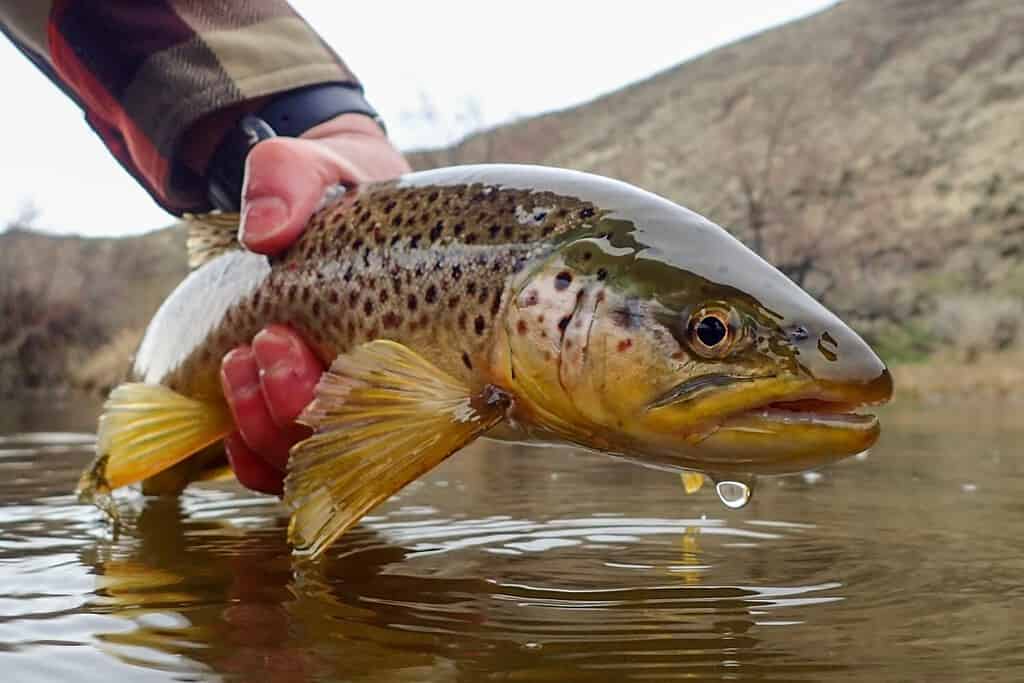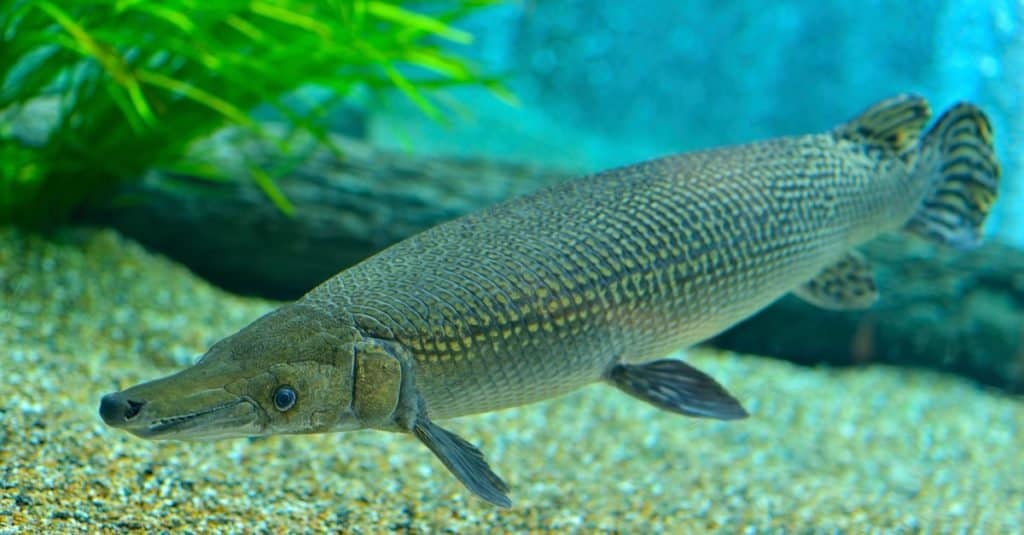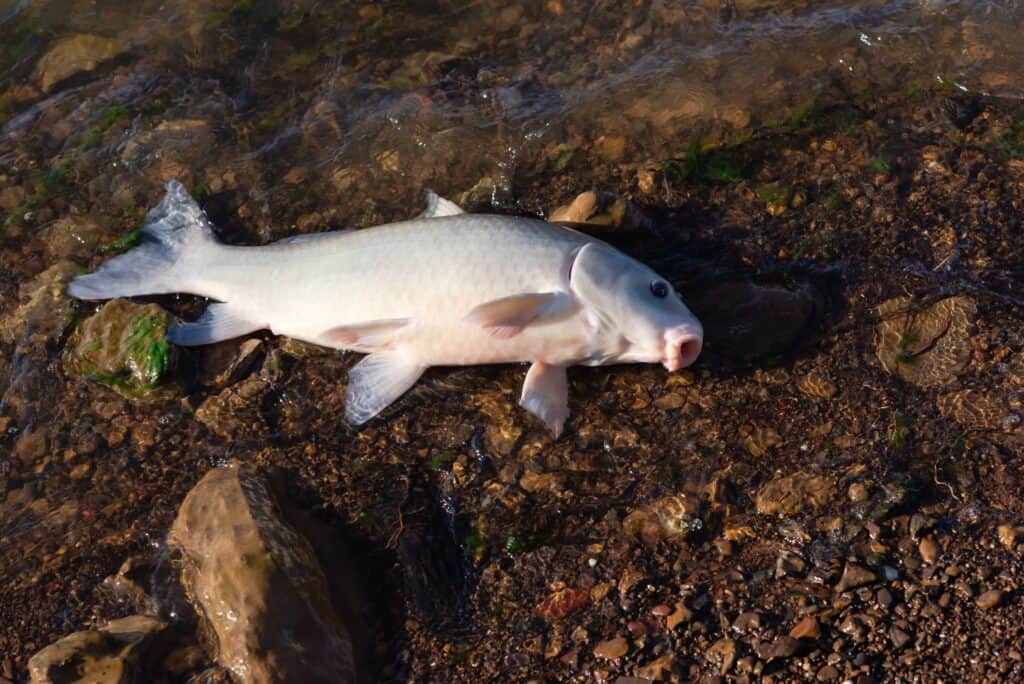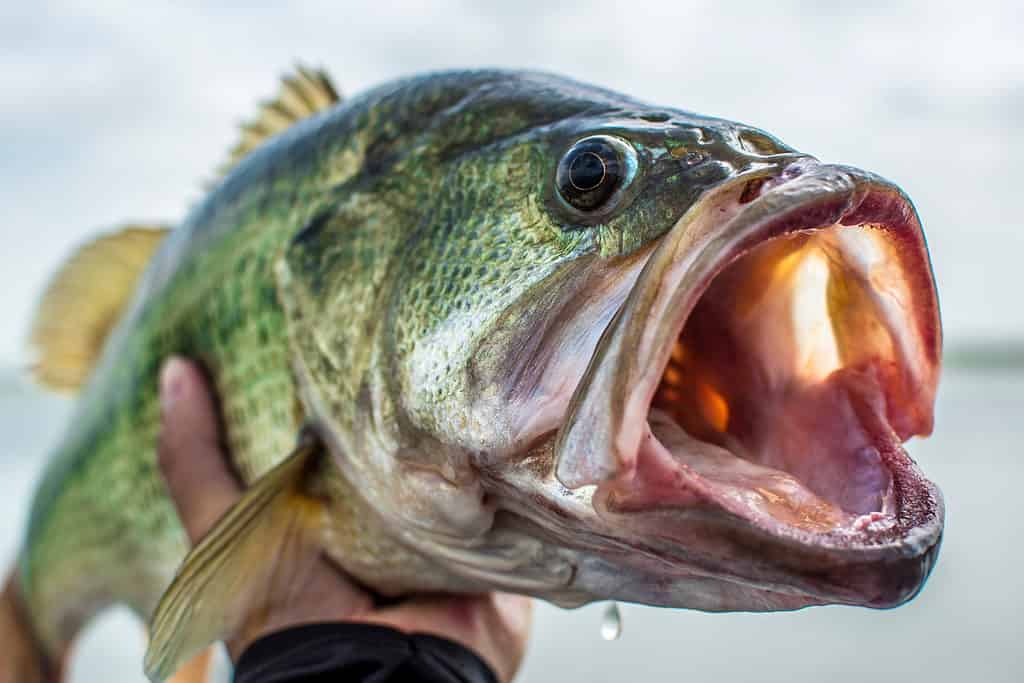The Rio Grande river is the fourth longest river in North America behind the Yukon River, the Mississippi River, and the Missouri River respectively. It runs along the border between Mexico and Texas and is the 20th longest river in the world.

The river provides an excellent opportunity for fishing and some very large fish can be caught there. Let’s take a look at some of the biggest fish that can be found in the Rio Grande river.
What Makes Fishing in the Rio Grande River Great?
The Rio Grande river makes a great place to go fishing and there are many reasons for this. There is a stretch of the river between the Del Norte and the South Fork where the river runs slow and steady. This area is designated as Gold Medal Water. This means that the area has been deemed by the Colorado Wildlife Commission as being an excellent spot to fish for large trout. It also means that the location is able to produce around 60 pounds of trout per acre, as well as trout that are at least 14 inches or larger within each acre.

The Rio Grande river flows through Big Bend National Park in Southwest Texas.
©CrackerClips Stock Media/Shutterstock.com
Many fish can be found all throughout the Rio Grande, especially brown trout, which swim the river in huge numbers. Brown trout can be found in the deeper water near the banks as well as beneath the roots of willows. Some of the trout can reach very large weights. Let’s take a closer look at the brown trout as well as go over some of the other large fish that can be found here at the Rio Grande river.

1. Brown Trout
Brown trout have streamlined bodies and large mouths. You can tell the difference between a brown trout and a rainbow trout by the fact that brown trouts have fewer and larger black spots on their backs. They also have some red mixed with the black spots and pale halos on their sides. The brown trout is the largest of the trouts and can grow to be rather sizable. Some of the biggest brown trout reach more than 20 pounds! These fish can be found in streams and rivers like the Rio Grande, although they are native to Europe and western Asia.

Brown trout can grow to weigh more than 20 pounds.
©CSNafzger/Shutterstock.com
2. Alligator Gar
Alligator gar are a prehistoric type of fish dating back to when the dinosaurs roamed the land. They can grow up to 10 feet long and in some cases, can weigh more than 300 pounds. It is the largest out of all the different types of gars (there are currently seven species still alive today, although fossil records show there used to be more) and is also one of the largest freshwater fish that can be found in America. So far, the largest size of alligator gar that has been reported was 9 feet and 8 inches. This particular fish weighed about 302 pounds.
Alligator gar can usually be found in large slow-moving rivers, but they can also be found in lakes, bayous, reservoirs, and bays. They tend to live in fresh or brackish water but have been known to enter saltwater on occasion. As you can guess, the alligator gar gets its name from the fact that it looks very similar to an alligator. But what’s interesting is that the fish has actually been around for a longer period of time than the alligator has — more than 150 million years.
The fish look like alligators but with fins instead of legs. They have diamond-shaped scales that cover their entire body and their faces are very boney. They also have long snouts and many sharp teeth. And these aren’t the only traits that make alligator gars impressive. They can also breathe air, which not many fish can do. This allows them to be outside of water for longer than most fish can.

Especially when viewed from above, alligator gars resemble the reptiles for which they are named.
©tristan tan/Shutterstock.com
3. Smallmouth Buffalo
Smallmouth buffalo can sometimes be easily confused with the carp. The way to tell the difference between the two is by knowing that smallmouth buffalo lack the barbels that carp have. Smallmouth buffalo are a light brown color on their backs and their sides or are dark with a coppery-greenish tent. The underside of the fish is usually white or pale yellow. This species can grow to very large sizes. They’ve been found to reach weights of more than 60 pounds. The world record for a smallmouth buffalo was set in 1993 with an 82-pound, 3-ounce fish caught in Texas.
These fish can be found in rivers such as the Rio Grande, large streams, and reservoirs. However, smallmouth buffalo tend to prefer waters that are clearer, contrary to the bigmouth buffalo. It is also unlikely to find smallmouth buffalo in waters where there are strong currents. As far as feeding goes, smallmouth buffalo are usually opportunistic feeders, meaning they will eat almost anything. They tend to consume whatever is most abundant in the environment that they’re in and are considered bottom feeders. Smallmouth buffalo will eat creatures like crustaceans, algae, insect larvae, and even detritus and sand.
Female smallmouth buffalo will broadcast their eggs across a wide variety of substrates in water that is between 4 and 20 feet in depth. The eggs of the fish are then left to develop alone. The fish will go on to develop rapidly over a number of years. There have even been cases found where 13-year-old smallmouth buffalo were still undergoing rapid development.

Smallmouth buffalo can be found in rivers such as the Rio Grande, large streams, and reservoirs.
©Trong Nguyen/Shutterstock.com
4. Largemouth Bass
The largemouth bass is the most popular game fish in the U.S. according to the National Survey of Fishing, Hunting, and Wildlife-Associated Recreation. The record for the biggest largemouth bass caught on the Rio Grande river is 10.33 pounds and 26 inches in length set in 2009.
Largemouth basses are usually light to dark green in color. They have dark blotches of color on their skin that form in horizontal lines on either side of the fish. The underbelly of a largemouth bass is generally light green to white in color. They have a dorsal fin that is divided and the anterior contains nine spines. The posterior contains 12-13 soft rays. You can also distinguish a largemouth bass by how the upper jaw reaches well beyond the margin of the eye.
Young largemouth bass will typically consume small insects, shrimp, and baitfish. As the fish matures into an adult, they will begin eating larger prey. Some of the prey adult largemouth bass consume include frogs, snails, bluegill, lizards, shad, small water birds, and even baby alligators!
For largemouth basses that live in large lakes or reservoirs that have deep waters, their diets will consist of mostly younger fish. Some of the fish they will eat include shad, shines, sunfish, yellow perch, and many others. In some cases, they will also consume walleye, striped bass, trout, or catfish.

The biggest largemouth bass caught on the Rio Grande is 10.33 pounds and 26 inches long, set in 2009.
©Pierre Rebollar/Shutterstock.com
The photo featured at the top of this post is © iStock.com/KevinCass
Sources
- Britannica, Available here: https://www.britannica.com/place/Rio-Grande-river-United-States-Mexico
- Kentucky Fish & Wildlife Resources, Available here: https://fw.ky.gov/Fish/Pages/Alligator-Gar.aspx
- U.S. Fish & Wildlife Service, Available here: https://www.fws.gov/story/all-about-alligator-gar
- Texas Parks & Wildlife, Available here: https://tpwd.texas.gov/huntwild/wild/species/smallmouthbuffalo/
- Missouri Department of Conservation, Available here: https://mdc.mo.gov/discover-nature/field-guide/smallmouth-buffalo
- United States Census Bureau , Available here: https://www.census.gov/library/publications/2018/demo/fhw-16-nat.html
- Bass Online, Available here: https://bassonline.com/freshwater-species/largemouth-bass/
FAQs (Frequently Asked Questions)
What are some native fishes of the Rio Grande River?
Some of the most abundant native fish in the Rio Grande River include fathead minnows, silvery minnows, and red shiners.
Can you fish in the Rio Grande River?
Yes, you can fish in the Rio Grande River. However, check to be aware of private property before fishing in an area.
Are there alligators in the Rio Grande River?
Yes, there are some alligators in the Rio Grande River, and fishermen should use caution.
Thank you for reading! Have some feedback for us? Contact the AZ Animals editorial team.






